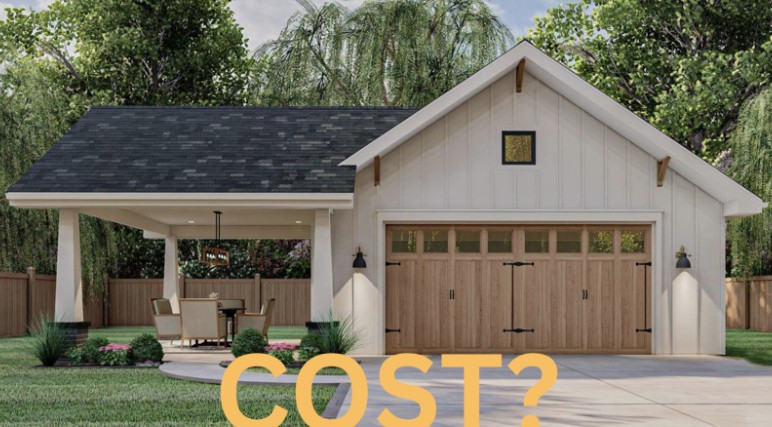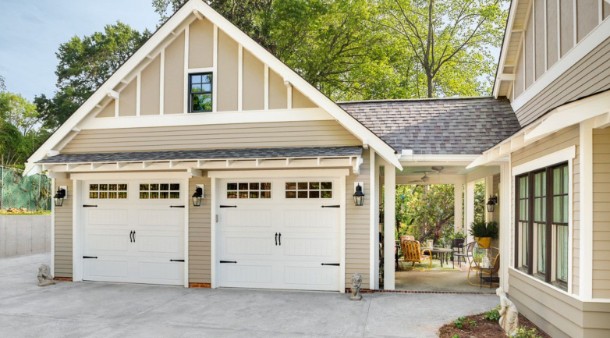A new garage can be one of the best investments you can make in your home, but it’s also an investment that requires careful financial planning. What will it cost to build a garage in 2025? The short answer is, it depends. Prices can differ substantially, depending on the size of your garage, the materials, the location, and labor. When you’re not ready, expenses can get out of hand, and homeowners can end up with budget remorse. On the other hand, with careful planning, you can also leverage your investment and enhance the resale value of your property.
We’ll explore the cost of building a garage, discuss hidden costs to watch out for, and explain how using construction estimating services can support accurate planning, along with some one-time money-saving tips so that you can make an informed decision. These services help homeowners get a detailed material and cost breakdown before starting a garage project.
Cost Of Garage Construction In 2026

When people look for “how much does it cost to build a garage,” the national average will not be the same price as it will be in places like Montana, which may experience temperatures of -60 degrees Fahrenheit.
Average Cost to Build a Garage
The average cost to build a garage is between $18,000 and $55,000, depending on the size of the garage and the design style.
Single-car garage: $18,000 – $28,000
Two-car garage: $28,000 – $45,000
Three-car garage: $40,000 – $55,000+
Basically, the price difference is about size and customization. A typical attached garage is generally less expensive than a detached one, which needs its own foundation and utility hookups.
If you’re a homeowner seeking the best long-term value (and cost-efficiency), it’s hard to beat a two-car garage.
Important Factors That Drive the Cost of a Garage Build

There are a few variables that determine how much you’ll ultimately spend. Here’s a breakdown of some of the biggest cost drivers.
Size and Layout
The bigger your garage, the more materials and labor you’ll need. One-car garages are commonly 12 x 20 feet, and two-car garages are usually 20 x 20 or 24 x 24. Costs increase when you add storage space, lofts, or extra depth for workshops. In high-demand areas like Texas, Florida, or North Carolina, even small layout changes can shift prices significantly.
Materials Used
Concrete block or brick garages may cost more, but they are considered more durable.
Wood Framing is also cost-effective but will need upkeep.
Steel framing is becoming increasingly popular due to its strength and modern look.
The siding, stucco, or brick veneer you select can add thousands to the total project cost. Material prices can vary by region; states such as California, Colorado, and North Carolina often experience higher material rates due to supply and demand.
Labor and Contractor Fees
There is a dramatic difference in contractor costs depending on where you live. Labor prices are higher in major cities like New York, North Carolina, Los Angeles, and Miami, and more affordable in rural regions. Skilled professionals cost more upfront but significantly reduce the risk of costly mistakes. For detailed budget planning in NC, many homeowners use North Carolina construction estimating services to get accurate cost projections before starting.
Custom Features
If you’re insulating, adding plumbing or heating, or turning your garage into a workshop, office, or any type of living space, expect costs to climb. These upgrades boost comfort and functionality but can easily add $5,000–$15,000,+ depending on the location. For example, custom climate control or workshop setups in areas like North Carolina, Georgia, and Nevada typically require more specialized labor.
Location
Your state and city play a major role in the overall garage construction cost. Material availability, weather conditions, building codes, and local permit fees influence the final price.
Regions such as North Carolina, Texas, Arizona, Ohio, Virginia, and Pennsylvania all have different cost ranges, with coastal and high-growth areas typically being more expensive.
Hidden Costs Homeowners Often Forget

See, budgeting for the garage shell alone is not going to cut it. A lot of homeowners forget to account for hidden costs that can easily stack up:
Permits and inspections: $500–$2,000, depending on your city.
Site work and foundation: Lots that are either sloping or have poor soil can both drive up expenses.
Utility hookups: Running electricity for wiring, outlets, and lights is another common expense that can range from $1,000 to $3,000. The addition of plumbing or HVAC inflated costs further.
Driveway and landscaping: Bringing the yard back or making your driveway bigger will run you a few thousand dollars.
It’s these kinds of “gotcha” expenses that tend to lead homeowners to spend more than they expected.
Cost-Saving Tips Without Compromising Quality

Here’s the good news: You can trim your costs without sacrificing quality.
Obtain bids from more than one contractor to compare prices.
If you stick to standard sizes and layouts, you can manage costs.
Select energy energy-saving material that will help you keep the long-term bills in check.
Think about whether you can build in stages, like building a basic garage shell first and adding upgrades at a later point if it fits your budget.
Attached vs. Detached Garages: What’s the Best Option for You?
One of the major choices is whether to add an attached or detached garage.
Attached Garage
Pros: Less expensive, off-the-curb access to house; easier and cheaper to heat, cool.
Cons: Little to no design flexibility, decreased privacy, and possible safety hazard with fumes.
Detached Garage
Pros: Versatile layout, perfect band and guest quarters, and more privacy.
Cons: More costly because the foundation and utilities are separate; less convenient in bad weather.
For resale purposes, a detached garage may be worth more if it’s a large and usable space (and doesn’t look like an afterthought), but generally, the most popular garage is an attached two-car version.
Is It Worth It To Build A Garage in 2025?
Absolutely, if done wisely. There are many advantages to a well-crafted garage:
Higher value property: People are willing to pay more for a house that has an operational garage.
Energy efficiency: Insulated garages can aid in temperature control inside the home.
Additional storage & space: Steel utility tasks used for tools, sports equipment and even a work desk.
Curb appeal: A chic garage can be a game-changer for your home exterior.
But the ROI could be lower in areas with plenty of off-street parking. Always consider where you are and what you need before investing.
Conclusion
So what does it cost to build a garage in 2025? Owners can expect to spend an average of between $18,000 and $55,000; the cost varies based on size, materials, features, and location. Although there are hidden costs that can cause your budget to soar, proper planning, honest estimations, and cost-saving techniques will keep you on target.
Whether you opt for an attached or detached style, a garage can not only provide additional storage and parking but also elevate your home’s curb appeal and overall value.
FAQs
Q1: Is it cheaper to build or buy a garage?
Prefab garages are generally cheaper in the short run; they cost anywhere from $10,000 to $20,000 and can be installed in as little as a few weeks. They provide less customization and life span than a custom-built garage, which might take months to build but is more enduring, the commissioners said, with added resale value.
Q2: How long does it take to build a garage in 2025?
This is for a basic garage to hold one car, and can take 2–4 weeks depending on your location and needs. A larger custom-designed and finished construction with utilities might take up to 2–3 months, or more, due to the weather and the contractor's schedule.
Q3: What type of garage is most valuable to a home?
The most popular among buyers is a two-car attached garage, which is the best combination of price, convenience, and extra property value.










